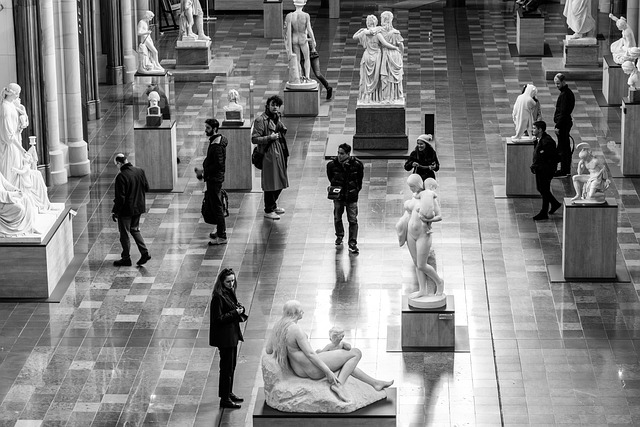
Viewer Role in Modern Karaoke Culture and Entertainment
Karaoke, once a localized pastime, has grown into a global phenomenon that thrives on the vibrant energy of its audience. The viewer, who might be the silent observer, the cheering friend, or the silent critic, now holds a pivotal place in shaping the experience. In contemporary settings, the viewer’s role transcends passive observation; it becomes a catalyst that can transform a simple performance into a shared cultural event. Understanding this dynamic offers insight into why karaoke continues to evolve as a mirror of modern entertainment and social interaction.
The Evolution of Viewer Participation
Historically, karaoke venues were intimate spaces where a single performer dominated the room. The audience listened, sometimes murmuring approval or disapproval. Over the past two decades, the model shifted toward interactive participation. Today, the viewer is often expected to engage—by requesting songs, cheering, or even stepping into the spotlight during group performances. This transition reflects broader cultural trends toward participatory media, where audiences are no longer content consumers but co-creators of the entertainment experience.
Technology’s Catalyst
Smartphone apps and streaming platforms have reshaped the karaoke landscape, giving viewers unprecedented access to curated playlists and real‑time voting features. The ability to swipe through a library of tracks and cast votes for the next song has made the viewer an active decision‑maker. Additionally, live streaming services allow viewers from around the world to watch local karaoke events in real time, turning a simple bar night into a global community gathering.
“The line between performer and audience is increasingly blurred,” said a leading entertainment analyst. “What we used to call passive observation is now an interactive dialogue.”
Cultural Significance of Viewer Interaction
The way viewers engage with karaoke can reveal underlying cultural values. In many Asian cultures, karaoke is a communal ritual where the group’s cohesion is expressed through synchronized singing and shared laughter. The viewer’s encouragement serves as social glue, reinforcing relationships. In Western contexts, the viewer often acts as a judge, offering critiques that can be playful or sharp. This duality—supportive versus evaluative—illustrates how viewer behavior reflects broader societal attitudes toward performance, conformity, and individuality.
Psychology Behind the Applause
For viewers, the act of cheering is not merely a social courtesy; it is an emotional investment. Studies show that audience applause can boost the performer’s confidence, which in turn elevates the overall energy of the room. This feedback loop encourages viewers to become active participants. Moreover, viewers often experience a sense of belonging when they recognize shared tastes or cultural references, reinforcing the communal nature of karaoke as a form of collective identity formation.
- Emotional reinforcement: Applause validates the performer.
- Social bonding: Shared enjoyment creates camaraderie.
- Identity expression: Viewers align with cultural or musical trends.
Building Communities Through Shared Viewing
Karaoke bars often become hubs for local communities, where regular viewers develop lasting friendships. These groups form around shared music preferences, regional dialects, or even playful rivalries. The viewer’s role as a peer reviewer or a cheerleader fuels this community building, allowing people to express themselves in safe, non‑competitive environments. In urban centers, such spaces provide a counterbalance to the isolation often associated with digital media consumption.
Viewer-Generated Content and Social Media
In recent years, many viewers have taken their engagement further by recording and sharing karaoke moments on platforms like TikTok and Instagram. This phenomenon has turned viewers into content creators who curate snippets of performances, compile fan compilations, and even host virtual karaoke nights. The viral nature of such content amplifies the cultural footprint of karaoke, turning local events into international sensations.
Global Trends and Local Nuances
While the basic mechanics of karaoke remain consistent worldwide, the viewer’s expectations and behavior vary by region. In Japan, where karaoke originated, the culture emphasizes harmony and collective enjoyment, with viewers often reciting “good luck” or “well done” in a gentle tone. In contrast, in Latin America, enthusiastic cheering and spontaneous dance breaks are common, reflecting a more exuberant social fabric. Understanding these regional subtleties helps explain why the viewer’s role is adapted to fit local cultural narratives.
The Rise of Hybrid Experiences
Hybrid karaoke events that blend live performance with virtual participation are becoming mainstream. In these settings, viewers at home can influence the setlist through live polls, send real‑time emojis, or even control lighting and audio effects. This immersive experience underscores how the viewer is no longer a passive bystander but an integral part of the entertainment ecosystem, blurring the line between spectator and performer even further.
Future Outlook: The Expanding Role of the Viewer
Looking ahead, the viewer’s role in karaoke is set to expand with advancements in augmented reality, AI-powered song recommendation, and blockchain-based voting systems. These technologies promise to make the experience even more interactive, allowing viewers to experience personalization at unprecedented scales. As the line between performance and consumption continues to dissolve, viewers will likely become key stakeholders in shaping not only what is sung but how the cultural narrative around karaoke evolves.
Key Takeaways for the Modern Viewer
1. Engagement matters. Your cheers and votes can elevate the entire event.
2. Community is built through shared experiences. Regular participation strengthens bonds.
3. Technology amplifies influence. Utilize apps and social media to shape the karaoke landscape.
4. Respect cultural nuances. Understand local expectations to contribute meaningfully.
Conclusion
The viewer has moved from a silent presence to an active, indispensable component of karaoke culture. This shift mirrors broader trends in entertainment where audiences are empowered to influence, curate, and co-create experiences. As technology continues to integrate viewer participation into the core of karaoke, the practice will remain a vibrant reflection of modern culture—one that thrives on collaboration, feedback, and shared joy. The future of karaoke depends not just on the performer but on the vibrant chorus of viewers who bring the music to life.


